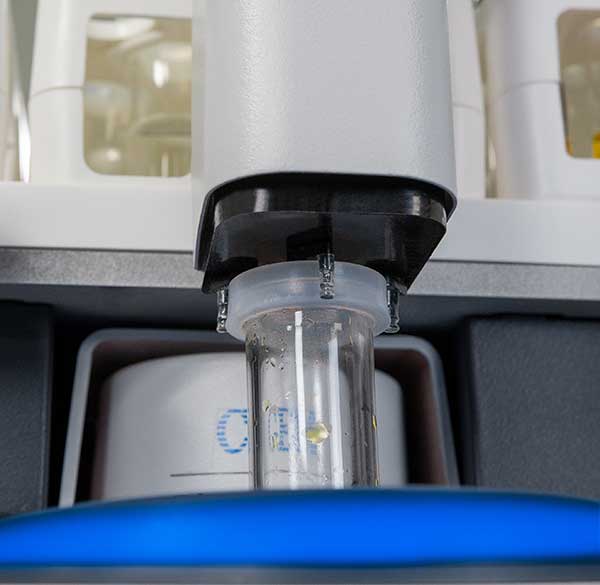- Produkte /
- Synthese /
- Discover 2.0 /
- Anwendungsbeispiele

Anwendungen
Die mikrowellenunterstützte Synthese ist zweifelsfrei der schnellste und der produktivste Weg zum gewünschten Wirkstoff. Über 10.000 Literaturstellen mit stark zunehmender Tendenz berichten von den Möglichkeiten dieser Technologie.

Anwendungsbeipiele
Einsatz des universellen Mikrowellen-Synthesegerätes Discover/Explorer zur Synthese von Nanopartikeln. Ein automatisiertes mikrowellen-basiertes System für die Herstellung und Untersuchung kolloidaler Nanopartikel mit integrierter Echtzeit-Photolumineszenz- und Absorptions-Analytik.
Video ansehen
Die Mikrowelle beschleunigt eine Vielzahl von Reaktionen. Dieses gilt auch für Derivatisierungsreaktionen wie z. B. die Substitution von Tri-Methylsilyl Gruppen (TMS) für die GC-MS Analyse von Steroiden. Bowden et al. zeigen in ihrer Veröffentlichung aus 2009, das mit der Mikrowellenbeschleunigung in nur 1 min. die Derivatisierungen realisiert werden konnten.
Derivatization of steroids is typically required before analysis by gas chromatography/mass spectrometry (GC/MS); nevertheless, the derivatization process can often be time- consuming and irreproducible. Although several strategies have been employed to enhance this process, few have the potential of microwave-accelerated derivatization (MAD) to be more efficient than traditional thermal derivatization methods. MAD using a synthesis microwave system was evaluated and compared to traditional thermal derivatization.
Publikation lesen
This Feature Article gives an overview of microwave-assisted liquid phase routes to inorganic nanomaterials. Whereas microwave chemistry is a well-established technique in organic synthesis, its use in inorganic nanomaterials‘ synthesis is still at the beginning and far away from having reached its full potential. However, the rapidly growing number of publications in this field suggests that microwave chemistry will play an outstanding role in the broad field of Nanoscience and Nanotechnology. This article is not meant to give an exhaustive overview of all nanomaterials synthesized by the microwave technique, but to discuss the new opportunities that arise as a result of the unique features of microwave chemistry. Principles, advantages and limitations of microwave chemistry are introduced, its application in the synthesis of different classes of functional nanomaterials is discussed, and finally expected benefits for nanomaterials‘ synthesis are elaborated.
Applikation ansehen
Ein häufiges Missverständnis ist, dass Mikrowellen-Synthesen ein polares Lösungsmittel benötigen. Polare Reagenzien/Edukte/Zwischenstufen interagieren im Discover 2.0 stark genug, um auch in unpolaren Lösungsmitteln effektiv zu erwärmen. Sehen Sie hier, wie eine mikrowellenbeschleunigte Diels-Alder-Reaktion in Toluol eine hervorragende Ausbeute liefert.
Applikation ansehen
Applikation
Informationen
Anfragen
Kontakt
Carl-Friedrich-Gauß-Straße 9
D-47475 Kamp-Lintfort
+49 (0) 2842 96440
+49 (0) 2842 964422
